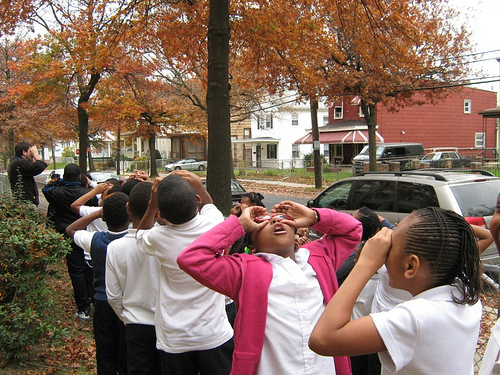Ten Best Cities for Urban Forests

Washington, D.C. (Photo courtesy District Department of Transportation)
America is home to more than 100 million acres of urban and community forests. These are the forests that line our streets, shade our buildings and burst with color every spring and fall. Trees also clean our air and help prevent pollution and flooding. That’s one of the reasons we like to call our urban trees ‘the hardest working trees in America.’
The U.S. Forest Service recently funded a project by American Forests that took a hard look at these green spaces, and ranked the 10 best cities for urban forests.
“Our urban forests bring nature closer to the more than 80 percent of Americans now living in cities and towns. These urban havens purify the air we breathe, filter our water, and provide beauty and escape for people from all walks of life,” said U.S. Forest Service Chief Tom Tidwell. “The 10 winning cities provide a model for others to follow – the greener our urban forests, the more livable all of our cities will be.”
A panel of leading urban foresters and researchers from academia, municipal organizations, nonprofits and the Forest Service selected the highlighted cities based on a combination of criteria including the volume and health of their green spaces and city efforts to improve them. Austin, Texas, offers 36 acres of parkland for every 1,000 people, and Washington, D.C. boasts more than 7,000 acres of green space. Meanwhile, 31 percent of Minneapolis is covered by tree canopy and New York City intends to plant 1 million new trees by 2017.

Local children from the Paul Public Charter School in Washington, D.C., take to the streets pretending to use binoculars in search of their urban forest. Washington D.C. was one of the top cities highlighted in the NY Times “Top 10 Urban Forests”.
Economic gains and savings were also major selection criteria for the committee. Trees in Charlotte, N.C., provide more than $900,000 in energy savings each year,. Denver’s trees contribute $18 million per year in tourism dollars.
Milwaukee’s urban forest provides $15 million in storm water savings annually, while the urban forest of Portland, Ore., offers more than $38 in total economic benefits. Seattle’s 4.35 million trees are worth almost $5 billion.
Finally, partnerships and volunteer work in Sacramento yield thousands of hours of effort in that city’s urban forests
The Forest Service’s robust urban forestry and research programs are active in the neighborhood forests of more than 7,000 communities across the U.S. The agency also recently released a mobile version of its hugely popular i-Tree software suite. This urban forestry software allows users to easily and accurately find the dollar value of the benefits provided by urban forests, including energy cost savings, storm-water capture and pollution absorption.

Oh how the Gov twist things around The US needs more trees planted grown to help the local “Our urban forests bring nature closer to the more than 80 percent of Americans now living in cities and towns. These urban havens purify the air we breathe, filter our water, and provide beauty and escape for people from all walks of life,” said U.S. Forest Service Chief Tom Tidwell
We need to do a LOT More not say Hey Look at what we got Isn’t that “Nice”, We did a good job… NO you have not ASK for more Volunteers to plant more Oak trees, more Mangrows etc.
I am surprised that Atlanta, the City of Trees, was not included in this list. I believe that it ought to be. Flying into Hartsfield International Airport, one sees more trees than buildings!
I have already planted 400 Pecans trees, went to NRCS as I am wanted to plant another 1,000 trees and they will not assit, and suggestions.